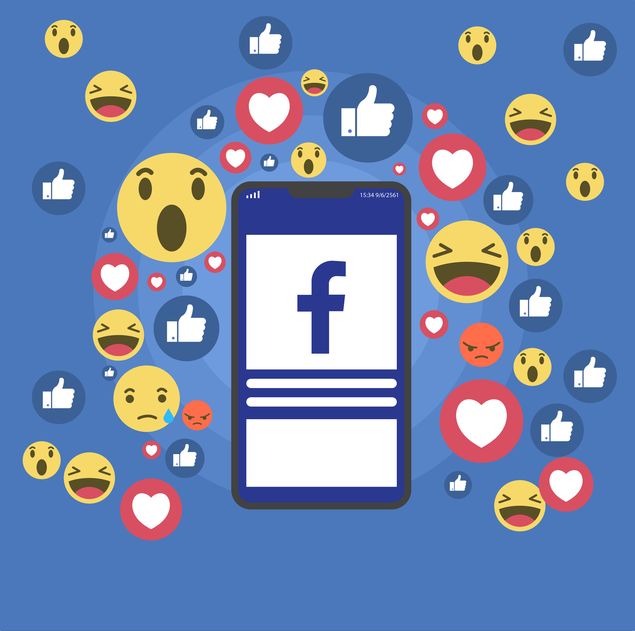- Categories :
- More
The Meta Takeover: What Does It Mean for Business Owners?

If you could hop in a marketing time machine and zoom back two decades you would find a world where traditional methods such as newspapers and magazine print ads still had significant reach, telemarketing (!) was in its dying embers, and“viral marketing” was associated with “email chains”!
At the same time, a kid in Harvard University’s Kirkland House dorm room H33 was writing code on a whiteboard, scarfing “Hot Pockets” during all-night coding sessions as he turned his boyish lark “FaceSmash” platform into what is known today as Facebook.
Yes, while America was talking about Janet Jackson’s wardrobe malfunction at the Super Bowl and clipping out Lindsay Lohan's “milk mustache” (Got Milk?) print ads, Mark Zuckerberg was launching what would become Meta, a $1.5 trillion company with Facebook, Instagram, WhatsApp, and other properties making up a digital ecosystem with reach and engagement that businesses cannot afford to ignore.
“Meta’s transformation from burgeoning social network to media behemoth and AI innovator has forced markets to adapt time and again,” writes Sara Lebow in EMARKETER. “With a projected $64.63 billion in US ad revenues in 2024, Meta will account for 21.3 percent of US digital ad spend and 74.5 percent of US social network ad spend, according to a March 2024 EMARKETER forecast.”
Let’s examine the “Meta takeover”, its evolution through strategic acquisitions, the platforms it now owns and the digital advertising and marketing implications for business owners.
Meta Origin Story: From Dorm Room to Tech Powerhouse
If you have seen the movie “The Social Network” then you know Zuckerberg’s meteoric rise from launching “The Facebook” on Feb. 4, 2004, with his classmates, to a social media platform that reached 1 billion active users in less than a decade.
In 2021, after years of acquisitions and investments in emerging technologies, Zuckerberg announced that Facebook had become Meta, a new company to bring all their apps and technologies under one brand.
“Meta’s focus will be to bring the metaverse to life and help people connect, find communities and grow businesses,” said Zuckerberg at Meta’s launch.
Today Facebook is the largest social media platform in the world with more than 3 billion monthly active users and almost 3 in 4 internet users around the world (73.7 percent) use one of Meta’s services such as Facebook, Messenger, Instagram, WhatsApp, etc.
Here’s how we got to this point in time:
- Launched in February 2004, Facebook caught on quickly with half of the Harvard undergrads registering for the website in the first month. By June of that year, Zuckerberg and friends moved operations to Silicon Valley.
- The news feature was added in 2006 as Facebook membership is opened to anyone age 13 and older. Major companies, such as Coca-Cola, begin advertising on Facebook.
- Facebook launched Pages for businesses and brands to establish profiles in 2007 as the site passed MySpace to become the top social media platform.
- 2012 is a banner year as Facebook achieves a $100+ billion valuation with its highly anticipated IPO and later that year, Facebook snaps up Instagram for approximately $1 billion in cash and stock.
- Facebook reached 1 billion users in 2013.
- Video capabilities were expanded in 2014, and Facebook acquired messaging app WhatsApp in a $19 billion deal.
- Facebook reaches 3 billion monthly users in 2021, including 2 billion active daily users, and changes its name of the parent company to Meta Platforms.
The Meta Ecosystem: A Digital Domain
The Meta ecosystem is now a dominant digital domain that owns four of the biggest media platforms in the world. This Meta ecosystem includes, according to The Motley Fool as of August 2024:
- Facebook: The flagship platform, with 3 billion monthly active users and – love it or hate it! -- the world’s undisputed biggest social media platform.
- Instagram: Visual-focused social media with over 2 billion monthly active users and is the world’s fourth largest social media platform.
- WhatsApp: End-to-end encrypted messaging app with 2 billion users. Facebook acquired it in 2014, and its reach has quadrupled since then, becoming the third largest social media platform.
- Messenger: Facebook's standalone messaging app which was acquired in 2011 when Beluga was bought. It’s the 7th largest social media platform with a potential reach of 979 million.
- Threads: A text-based conversation app integrated with Instagram. Threads was constructed to compete with Elon Musk’s X (formerly Twitter) platform.
- Oculus VR: Facebook purchased this immersive VR tech company in 2014, and it is part of Meta’s Reality Labs business unit.
- Reality Labs: Formed in 2020, Reality Labs combines VR and AR hardware and software such as Oculus, CTRL-labs, and Spark AR. Reality Labs new products include Project Aria (smart glasses), AI and the metaverse (Horizon Worlds).
- CTRL-labs: In 2019 Meta bought CTRL-Labs for its mind-reading wristband that utilizes neural interfaces.
All told, Meta/Facebook over the years has acquired nearly 100 companies to expand its reach to 70+ percent of the world’s internet users.
Dominating Digital Advertising
Meta's vast user base and sophisticated targeting capabilities have made it a juggernaut in the digital advertising world. In 2023, the company generated 98.4 percent of its revenue from advertising, amounting to $131.9 billion.
Meta’s control of digital advertising stems from their massive user base across platforms such as Facebook, Instagram, WhatsApp and Messenger, which not only provides unprecedented reach and engagement, but also creates a rich dataset of user behaviors, interests, and connections.
Sophisticated targeting capabilities take advantage of this data to allow advertisers to reach very specific audiences with high precision.
Meta continues to innovate its advertising offerings to provide more value to businesses:
- Conversion Value Rules: Allowing advertisers to assign different values to specific audiences or conversions. This allows campaigns to be optimized as businesses reach those audiences that matter most to them.
- Incremental Conversions: A new attribution setting focused on measuring the direct impact of Meta ads.
- CRM Integration: Plans to integrate data directly from advertisers' CRM systems for improved targeting accuracy
These advancements aim to provide more precise insights and enhanced campaign optimization for advertisers.
“When advertisers come to Meta, they want us to deliver the results that matter to them. Every business is unique in what they value most, which is why we offer different ways for them to optimize campaigns,” explained Meta in August 2024. “Understanding exactly what a business values allows us to bring a level of customization to each of their ad campaigns, which is integral to making sure our AI models and automation solutions continue to maximize every dollar spent.”
The Organic Reach Dilemma and How to Respond
While Meta's platforms offer unparalleled reach for paid advertising, organic reach has seen a steady decline over the years.
“Organic social media reach can be one frustrating metric for brands strategizing content. You put time, research and effort into curating and posting your brand content, but then it seems like no matter what “algorithm-hacking” formula you follow, your posts only reach a tiny percentage of your audience,” Forbes Councils Member Ismael EL Qudsi wrote in 2023.
This shift has forced businesses to adapt their strategies, often requiring a mix of paid and organic content to maintain visibility and engagement.
Here are some tips for businesses navigating this meta-dominated landscape:
- Diversify Your Platform Presence: Don't put all your digital eggs in one basket. While Facebook remains dominant, ensure your business has a presence on Instagram, and consider how WhatsApp or Messenger could fit into your marketing strategy.
- Embrace Video Content: Video having “it’s moment” has morphed into video is now considered the most effective way to market. With the rise of Reels on Instagram and Facebook, short-form video content has become crucial for engaging audiences across Meta's platforms.
- Leverage Advanced Targeting Take advantage of Meta's sophisticated targeting options to reach your ideal customers. Utilize custom audiences, lookalike audiences, and detailed targeting to maximize your ad spending efficiency.
- Stay Agile: Meta's platforms and algorithms are constantly evolving. Stay informed about changes and be prepared to adapt your strategies quickly.
- Focus on Community Building: Despite the decline in organic reach, building a strong community around your brand can still yield significant benefits. Engage with your audience consistently and meaningfully.
- Integrate Meta Pixels: Implement Meta pixels (JavaScript code that tracks visitor activity) on your website to track conversions, build retargeting audiences, and gain valuable insights about your customers' behavior.
- Explore Emerging Features: Stay ahead of the curve by experimenting with new features like Shops, Live Shopping, or AR experiences as they become available.
The Future of Meta and Digital Marketing
As Meta continues to evolve, it appears that its influence on digital marketing will only grow.
While the company's focus on the "metaverse" – a collective virtual shared space – has not opened new frontiers for advertising and brand experiences on a promised level yet, history dictates that betting against Meta might be a foolish move.
Meta’s spot at the top of the social media mountain is not without challenges, especially with increased scrutiny over data privacy, potential antitrust regulations, and the need to balance user experience with advertising revenue.
For all we know, somewhere in the metaverse, in a digital room, the next Zuckerberg is plotting new technologies that will transform marketing two decades from now.
Remember it wasn’t that long ago when one definition of “viral marketing” was “viral marketing strives to have consumers propagate an advertiser's message through word-of-mouth and e-mail chains, instead of using costly traditional methods.”
For now, businesses must pay close attention to the “Meta takeover” and figure out the best way to effectively leverage Meta’s ecosystem of platforms and tools to successfully reach their audiences.
Now, I need to check my email chain …














